 W
WAcanthoplus discoidalis is a species in the Bradyporinae, a subfamily of the katydid family (Tettigoniidae). Like its closest relatives, Acanthoplus discoidalis variously bears common names such as armoured katydid, armoured ground cricket, armoured bush cricket, corn cricket, setotojane and koringkriek. The species is native to parts of Angola, Namibia, Botswana, Zimbabwe and South Africa.
 W
WAmmophila pictipennis is a species of thread-waisted wasp in the family Sphecidae, found in the eastern half of North America.
 W
WAnthophora californica, the California anthophora, is a species of anthophorine bee in the family Apidae. It is found in Central America and North America.
 W
WAnthophora montana, the Rocky Mountain anthophora, is a species of anthophorine bee in the family Apidae. It is found in Central America and North America.
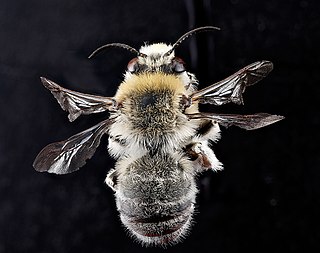 W
WAnthophora occidentalis, known generally as the western anthophora or digger bee, is a species of anthophorine bee in the family Apidae. It is found in North America.
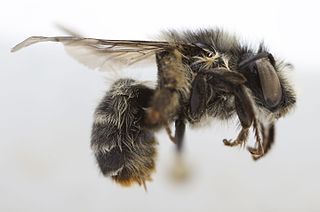 W
WAnthophora terminalis is a species of anthophorine bee in the family Apidae. It is found in North America.
 W
WAnthophora ursina is a species of anthophorine bee in the family Apidae. It is found in North America.
 W
WAustrogomphus ochraceus, also known as Austrogomphus (Austrogomphus) ochraceus, is a species of dragonfly in the family Gomphidae, commonly known as the jade hunter. It inhabits streams, rivers and lakes in eastern Australia from north of Brisbane through New South Wales to Victoria.
 W
WBibio anglicus is a species of fly from the family Bibionidae.
 W
WBombus distinguendus, the great yellow bumblebee, is a species of bumblebee found in Austria, Belgium, the Czech Republic, Denmark, Finland, France, Germany, Great Britain, Hungary, Ireland, Lithuania, Poland, Romania, Slovakia, Switzerland, northern Russia, and North America.
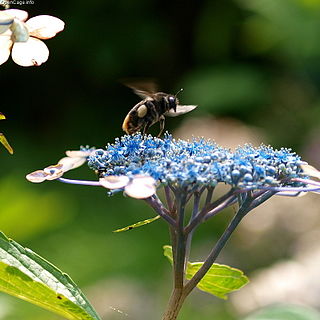 W
WBombus ignitus is a species of bumblebee in the family Apidae. It is mainly distributed in Eastern Asia, commonly found in China, Japan, and Korea. It is used in China and Japan commercially as a pollinator. B. ignitus is a eusocial insect with a queen that is monandrous - mating with only one male in the late summer before hibernating until the following spring. It builds its nest out of a mass of pollen and lays its eggs after completion. Due to numerous conflicts between queens and fertile workers, some surviving queens are badly injured, described by some as living corpses.
 W
WCalopteryx japonica is a species of broad-winged damselfly in the family Calopterygidae.
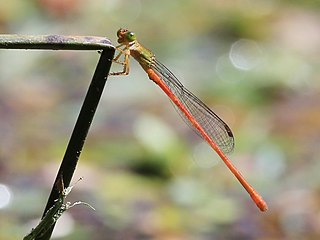 W
WCeriagrion aeruginosum is a species of damselfly in the family Coenagrionidae. Its common name is redtail. It is found in Indonesia, the Moluccas, New Guinea, Australia and possibly the Solomon Islands.
 W
WEurycantha calcarata is a species of phasmid endemic to Australasia.
 W
WExoprosopa decora is a species of bee flies in the family Bombyliidae.
 W
WHemiandrus pallitarsis is a species of ground weta endemic to New Zealand. This nocturnal species hides in burrows during the day, and can be an important food for kiwi. They can be identified by a single foretibial spine, three prolateral spines, and four retrolateral spines on the mesotibia, and their tibia lacks a tympanal membrane. The female has an unusual appendage on her abdomen, and the male has blackened hooks on his last tergite. They have a two year life cycle, and their diet is largely unknown. Unusually for an insect, the female shows maternal care towards her eggs and nymphs.
 W
WHemiphlebia mirabilis, commonly known as the ancient greenling, is a species of damselfly in the family Hemiphlebiidae. It is very small with a long, metallic-green body and clear wings. It is endemic to south-eastern Australia. Its natural swamp habitat is threatened by habitat loss.
 W
WHesperocorixa castanea is a species of water boatman in the family Corixidae in the order Hemiptera.
 W
WHierodula tenuidentata is a species of praying mantis in the family Mantidae.
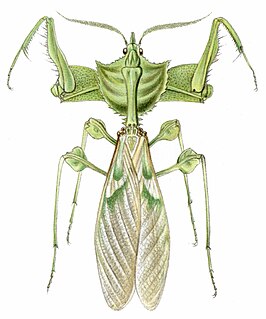 W
WIdolomantis diabolica, commonly known as the devil's flower mantis or giant devil's flower mantis, is one of the largest species of praying mantises, possibly the largest that mimics flowers. It is the only species classified in the genus Idolomantis.
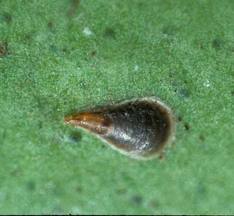 W
WLepidosaphes beckii also known as purple scale, mussel scale, citrus mussel scale, orange scale, comma scale and mussel purple scale is a scale insect that is a pest of Citrus trees. The small insects attach themselves to leaves, fruits and small branches and cause injury by sucking the tree's sap.
 W
WMegachile armaticeps is a species of bee in the family Megachilidae. It was described by Cresson in 1869.
 W
WMyiopharus doryphorae is a species of fly in the family Tachinidae. It is native to North America, and has a current distribution ranging from British Columbia and Nova Scotia in the north to Arizona, Mexico and South Carolina in the south.
 W
WNeoscapteriscus vicinus, the tawny mole cricket, is a species of insect in the mole cricket family, Gryllotalpidae. Colombian insect taxonomist Oscar Cadena-Castañeda studied specimens of the genus that had been called Scapteriscus, and decided that it included two groups; a smaller group and a larger group that he named Neoscapteriscus in 2015. It is native to South America and also occurs in the Southern United States, where it arrived as a contaminant of ship's ballast around 1900. North American mole cricket taxonomists agreed with his decision and altered Orthoptera Species File Online accordingly.
 W
WNeurigona carbonifer is a species of long-legged fly in the family Dolichopodidae.
 W
WNothomyia calopus is a species of soldier fly in the family Stratiomyidae.
 W
WOecanthus nigricornis is a "common tree cricket" in the subfamily Oecanthinae. A common name for O. nigricornis is black-horned tree cricket. It is found in North America.
 W
WOsmia uncinata, the pinewood mason bee, is a species of solitary bee from the family Megachilidae It is an Arctic-alpine species which is found in the northern Palearctic, in the United Kingdom it is a Biodiversity Action Plan priority species.
 W
WPachyrhamma edwardsii is a species of wētā, in the family Rhaphidophoridae, endemic to New Zealand. This species is found in caves, or large cavities where there is high humidity and little plant or animal life.
 W
WPhymateus aegrotus, sometimes called the blue bush locust or East African bush locust, is a pest species of grasshopper in the family Pyrgomorphidae. Unlike "locusts" the adults are not known to change their morphology on crowding, but at the hopper stage, marching behaviour of small bands may occur.
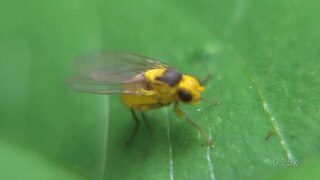 W
WPhytoliriomyza melampyga is a species of fly in the family Agromyzidae. It is found in the Palearctic. Mesonotum with yellow bands. Scutellum yellow. Frons yellow. The larva mines Impatiens glandulifera.
 W
WPlatylomia viridimaculata is a cicada species from Borneo and Peninsular Malaysia.
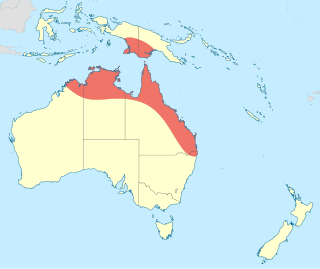 W
WPseudagrion cingillum is a species of damselfly in the family Coenagrionidae, commonly known as a northern riverdamsel. It is a medium-sized, blue and black damselfly. It is found in northern Australia and New Guinea, where it inhabits streams, pools and ponds.
 W
WPseudagrion kersteni, powder-striped sprite, Kersten's sprite or the powder-striped sprite, is a species of damselfly in the family Coenagrionidae. It is found in Angola, Benin, Burkina Faso, Cameroon, Central African Republic, Chad, the Republic of the Congo, Ivory Coast, Equatorial Guinea, Ethiopia, Ghana, Guinea, Kenya, Malawi, Mali, Mozambique, Namibia, Nigeria, Somalia, South Africa, Sudan, Tanzania, Togo, Uganda, Zambia, Zimbabwe, and possibly Burundi. Its natural habitat is rivers.
 W
WRabdophaga salicisbrassicoides, known generally as the willow rosette gall midge or willow cabbage gall midge, is a species of gall midges in the family Cecidomyiidae.
 W
WRuspolia lineosa is an insect which belongs to the family Tettigoniidae and found in eastern Asia. The scientific name of this species was first published by Walker in 1869.
 W
WSpalacomimus talpa is a species of katydids.
 W
WStagmatoptera binotata is a species of praying mantis in the genus Stagmatoptera.
 W
WStagmatoptera biocellata is a species of praying mantis in the genus Stagmatoptera.
 W
WSynlestes weyersii is a species of Australian damselfly in the family Synlestidae, commonly known as a bronze needle. It is endemic to south-eastern Australia, where it inhabits streams and rivers.
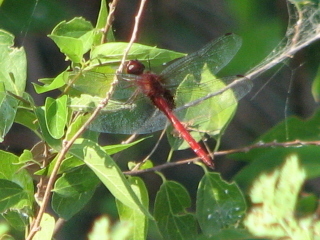 W
WTauriphila argo, the arch-tipped glider, is a species of skimmer in the dragonfly family Libellulidae. It is found in South America.
 W
WTeleogryllus commodus, commonly known as the black field cricket, is a cricket species native to Australia.They are significant pests to most plants in Australia and New Zealand. T. commodus belongs to the order Orthoptera, the family Gryllidae which are characterized by wings that are folded on the side of the body, chewing mouthparts and long, thin antennae. T. commodus has the ability to learn via the recognition of rewards. In addition, they are also capable of odour recognition and thus can be taught via odour pairing.
 W
WTenodera angustipennis is a species of mantis native to Asia and nearby areas of Oceania. The species was introduced and became established in the eastern United States. Tenodera angustipennis was noticed as early as 1921 in Aberdeen, Maryland, but that occurrence was not noted in a published record until 1933.
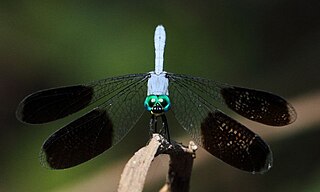 W
WTetrathemis polleni, the black-splashed elf is a species of dragonfly in the family Libellulidae.
 W
WGryllodes sigillatus, the tropical house cricket, Indian house cricket or banded cricket, is a small cricket probably native to southwestern Asia, but has spread throughout tropical regions worldwide. Like its relative the house cricket, the tropical house cricket is also raised commercially for feeding certain pets such as reptiles, birds, amphibians, and insectivorous arthropods.
 W
WTurbopsebius sulphuripes is a species of small-headed fly in the family Acroceridae.
 W
WTylopelta gibbera is a species of treehopper in the family Membracidae.
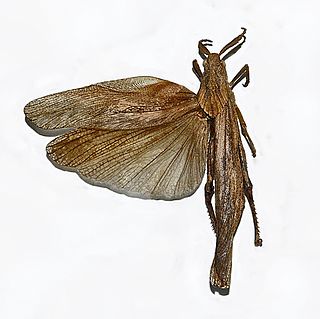 W
WXiphoceriana atrox is a species of grasshoppers belonging to the family Pamphagidae.
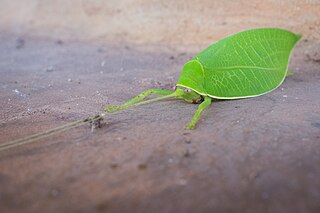 W
WThe Blue-legged Sylvan Katydid is a species of katydid, endemic to the South Africa region. IUCN classes it as Least concern due to its widespread distribution.